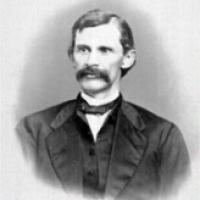The Evans Lectures are named for Evan William Evans, the first professor appointed at Cornell, a mathematician and college friend of A. D. White. The lectures are intended for an audience of mathematics faculty and graduate students, to bring them together to share in the excitement of mathematical research. The Evans Lectures are made possible through the generosity of an anonymous donor.
UPCOMING LECTURES
The Evans Lectures will be held on October 16, 2025 and October 17, 2025.
Professor Camillo De Lellis from the Institute for Advanced Study will be speaking.
The October 16th Lecture will be held from 4:30-5:30 p.m. in 532 Malott Hall
The October 17th lecture will be held from 4:30-5:30 p.m. in 406 Malott Hall
A reception will be held before each lecture at 4:00 p.m. in 532 Malott Hall.
If you need accommodations contact Heather Peterson.
PREVIOUS LECTURES IN THE SERIES
- Persi Diaconis, Stanford University (March 2022)
Titles and Abstracts
- Fernando Marques, Princeton University (November 2016)
Lecture I: Min-Max theory for the area functional - a panorama
Lecture II: The space of Weyl's Law and Morse Index Estimates
- Karin Melnick, University of Maryland (January 2013)
Lecture I: A rigidity theorem in conformal geometry and beyond
Lecture II: Normal forms for conformal Lorentzian vector fields
- Emmanuel Breuillard, Université Paris-Sud (October 2010)
Lecture I: The ubiquity of free groups
Lecture II: From free subgroups to random walks and spectral gaps
- Christopher Skinner, Princeton University (October 2009)
Special Values of L-Functions and Modular Forms
Lecture I: The saga of 691; Lecture II: Special value formulas
About Evans
Evan William Evans was born in 1827 in Wales. His family emigrated to America soon after his birth. In 1851 he graduated from Yale University, where he made the acquaintance of Andrew Dickson White. After graduating from Yale he served as Instructor in at Yale. He later became Professor at Marietta College in Ohio. In February 1867, White recruited Evans to head Cornell's Department of and Engineering. He was among the first group of faculty at Cornell. He held the post until a few months before his death in 1874.
James Oliver (of Oliver Club fame and himself a student of Benjamin Pierce at Harvard) described Evans as
“a man of few words but of remarkably sound and independent judgement that carried great weight in the faculty councils, and as an acute and thorough student, a philosophical and original thinker, a firm and loyal friend… Characteristic of his instruction or policy were: the remarkable power of concentration with which he would follow others’ work without using his eyes, his uniform preference for oral above written examinations, and his habit of taking a calculus class over the same ground with two successive authors for the sake of the cross-light”
Evans was also a scholar of Cymric literature and philology and has been described in this area as “having no superior in the United States.” He wrote treatises on “the oil and mineral region of southeastern Ohio” and “Primary elements of plane and solid geometry” and an article titled “On the path and velocity of the Guernsey county meteor of May 1st.”
Remarkably enough, the name of Evan William Evans is present to this day somewhere in Malott Hall (with a slightly different spelling)!

